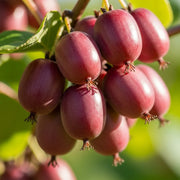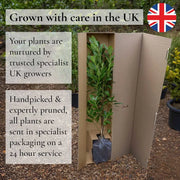Fancy growing your own kiwis? It's entirely possible to enjoy a prolific crop of delicious kiwi fruit right here in the UK with our specially selected range of hardy kiwi plants. These vigorous, climbing vines, from the *Actinidia* family, are...
Fancy growing your own kiwis? It's entirely possible to enjoy a prolific crop of delicious kiwi fruit right here in the UK with our specially selected range of hardy kiwi plants. These vigorous, climbing vines, from the *Actinidia* family, are not only productive but also highly ornamental, with attractive foliage and fragrant flowers.
Our collection includes reliable self-fertile varieties, perfect for smaller gardens, as well as traditional male and female pairs for maximum yield. Whether you're looking for the classic fuzzy kiwi or the smaller, smooth-skinned kiwi berry, you'll find the perfect plant to start your home-grown fruit adventure. Browse our selection of kiwi plants for sale and get ready for a truly rewarding harvest.

















